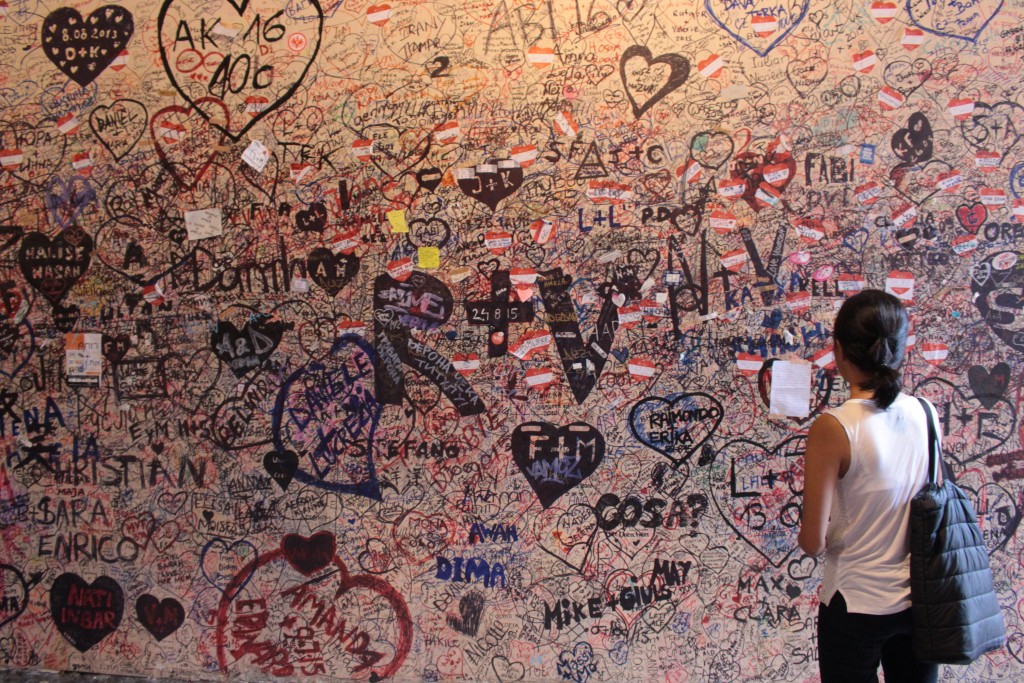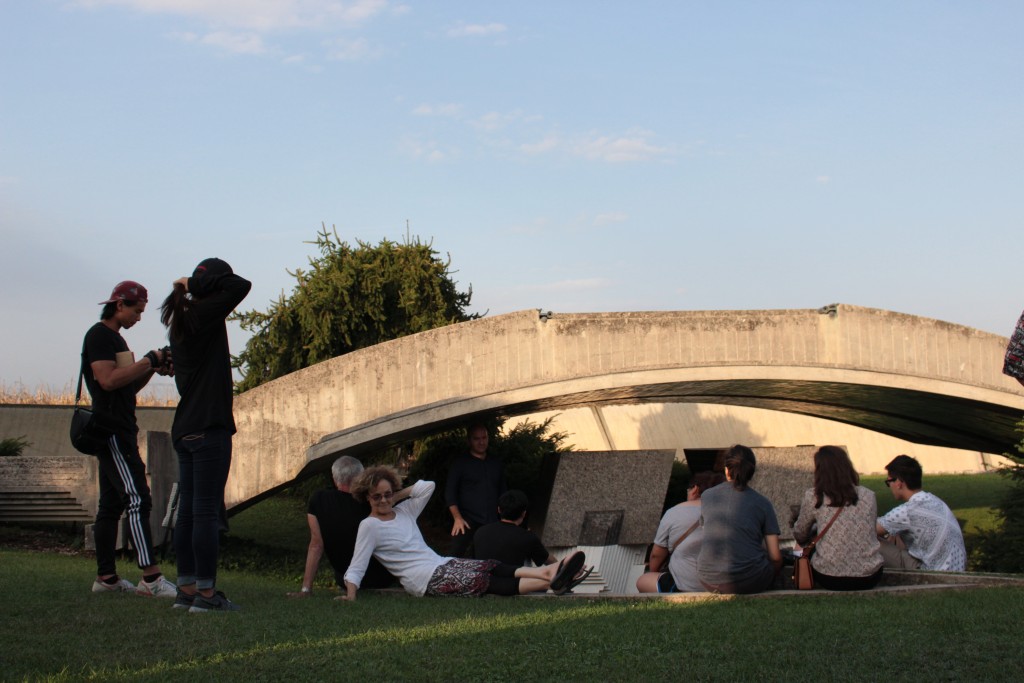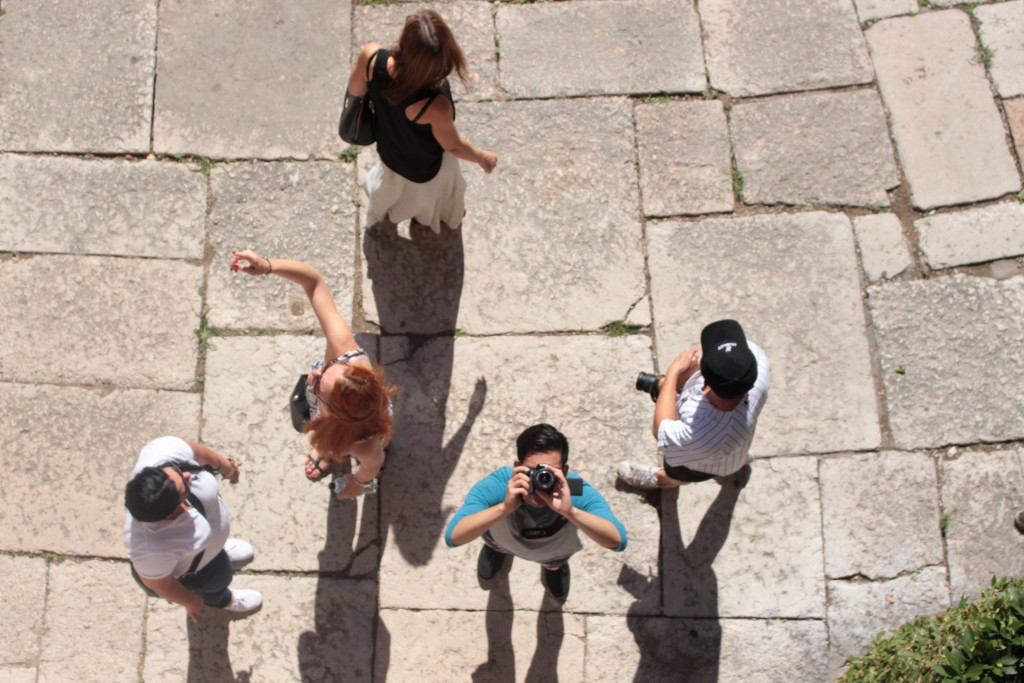
Photo by Michaela Delasanta
The next city that we had to go to was Verona. Before we arrived at our hotel; however, we had to visit three sites along the way. The first of these was Villa Barbaro, a Palladian designed home from the 16th century that had Veronese frescoes. Next, we began our three-day Carlo Scarpa pilgrimage throughout Northern Italy.

Photo by Michaela Delasanta
It started with Museo Canova, a gallery designed by Scarpa to showcase the magnificent sculptures created eighteenth century artist Antonio Canova. The gallery was beautiful; the white walls and white ceiling accented the plaster sculptures and enhanced the visitor experience by creating some kind of surreal hyper-classical environment. Although pictures weren’t allowed inside of the gallery, I was able to take one from the window leading out into the garden.
Next, we half drove, half walked to the Brion Cemetary, a site that doubled as a Scarpa project and his own tomb. This is where we stayed for about two hours that afternoon. Most of the students were sketching the area while some were trying to capture the space as best as they could through photographs. Davide stood underneath the canopy of a tomb and lectured to students about the history of Scarpa. It wasn’t a bad ending to the day; the weather was calm and cool and the sound of bubbling water provided soothing background noise. However, this serene scene didn’t last as long as I wanted it to, and soon we had to get up again and meet the bus driver so that he could drive us to Verona.

Photo by Michaela Delasanta
We arrived in Verona at 8 o’clock, just in time for dinner. Thankfully, our hotel had all of our rooms ready, so we brought our luggage upstairs and immediately headed out for food. After, we went straight to bed; another long day was finished.
In the morning, we toured buildings and piazzas from the Della Scala family, a legacy of nobles that lived in Verona in the thirteenth century. The continuation of our Scarpa pilgrimage was scattered between visits to the Porta Borsari, the Arche Scaligere, and Juliet Capulet’s house, where the famous balcony from Romeo and Juliet could be viewed.

Photo by Michaela Delasanta
At the end of our brief Verona excursion, we went to Museo di Castelvecchio, a museum that is visited widely for its architecture instead of its contents. Once a castle that protected the Della Scala family from the lower class in times of unrest, it is now a restored museum designed by Carlo Scarpa. After a brief introduction, we were allowed to explore the museum by ourselves. The architecture was actually brilliant. The way that light penetrated the space and how solids and voids interacted within the building was beautiful. After we were done walking through the museum, we went for a quick lunch, and left for Venice.
–Michaela
